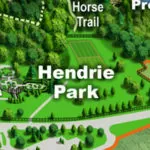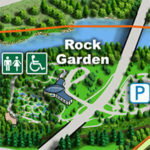| Membership | Price (+HST) |
|---|---|
| Single | $85/year |
| Single Plus | $120/year |
| Family | $130/year |
| Family Plus | $175/year |
| Contributing | $300/year |
| Supporting | $600/year |
| Sustaining | $1,000/year |
| Benefactor's Circle | $2,500/year |
| Director's Circle | $5,000/year |
| President's Circle | $10,000/year |
Wetland Restoration
An innovative freshwater marsh restoration venture for two large rivermouth wetland systems, the project includes a range of conservation projects but is dependent on the Fishway, the first carp barrier/two-way fishway structure on the Great Lakes. The structure is both an invasive species management structure as well as a public information and education site.
The current restoration initiatives began in 1993 as a component of the Fish and Wildlife Project. This broader project is part of the Hamilton Harbour Remedial Action Plan, supported by citizens through the federal and provincial governments and based in the Great Lakes Water Quality Agreement. On-site the project focuses on the basic issues that can be managed within the marshes directly. Recovery requires community partners that have similar goals and obligations concerning the stewardship of the two rivermouth marsh complexes and their watersheds. Overall status information is available through Harbour Remedial Action Plan, and Bay Area Restoration Council for community engagement.
These marshes are the last areas not significantly infilled in the Hamilton/Burlington area, and largest on western Lake Ontario. To be successful community efforts must focus on the watershed water quality impairments flowing in that negatively affect the marsh health. Communities include West Hamilton, Ancaster, Dundas, Waterdown, Burlington, and West Flamborough.

Wetland Restoration Projects
Watersheds and Marsh Water Quality
Cootes Paradise Marsh receives water from 17 different streams while Grindstone Marsh receives water from 9 different streams. These flow from neighbourhoods, parking lots, agricultural lands and natural areas covering 270 km2 and 89km2 respectively. The health of these marsh reflects the conditions of the upstream communities.
Fishway
The Fishway is located at the mouth of the Desjardins Canal – where Cootes Paradise Marsh flows into Hamilton Harbour. Its design keeps invasive Common Carp out of the marsh, but allows water and native fish to move between the two bodies of water. The Fishway is one of several remediation projects in place to restore the marsh to a healthy wetland community.
Grindstone Marsh Restoration
In Need of Your Trees!
The annual Tree collection returns! RBG needs a maximum of 2000 trees in order to strategically place them in critical zones. Community members are asked to pre-register their donation(s) ahead of their drop-off to both ensure we receive the desired amount for the project at hand, but also to be mindful of safety during these turbid times. Are you up to the calculated challenge? Let your tree continue to work for nature even after it’s done its traditional duty.
Bald Eagles
In 2013, RBG was home to the first eaglets to hatch on the Canadian shoreline of Lake Ontario in over 50 years.
Royal Botanical Gardens has the perfect environment to convince Bald Eagles to settle in. These large predators need at least 100 hectares of undisturbed forest to nest and roost, plus an adjacent 50 hectares of wetlands to allow them to catch fish.
Invasive Species Management
RBG’s widespread properties support a diverse range of species concentrated in our natural lands. Invasive species are one of the largest threats to the sustainability of the region’s biodiversity.
Wetland Restoration Resources
Learn more about RBG’s conservation efforts with these downloadable PDF resources, external links, and videos.

Support Conservation at RBG
These conservation projects are possible thanks to the generous support of RBG Members and donors. With a donation to RBG’s Areas of Greatest Need, you can ensure an active, vibrant and healthy future for the children of today and tomorrow through our horticultural and conservation projects.
Royal Botanical Gardens (RBG) is the largest botanical garden in Canada, a National Historic Site, and registered charitable organization with a mandate to bring together people, plants and nature.
















